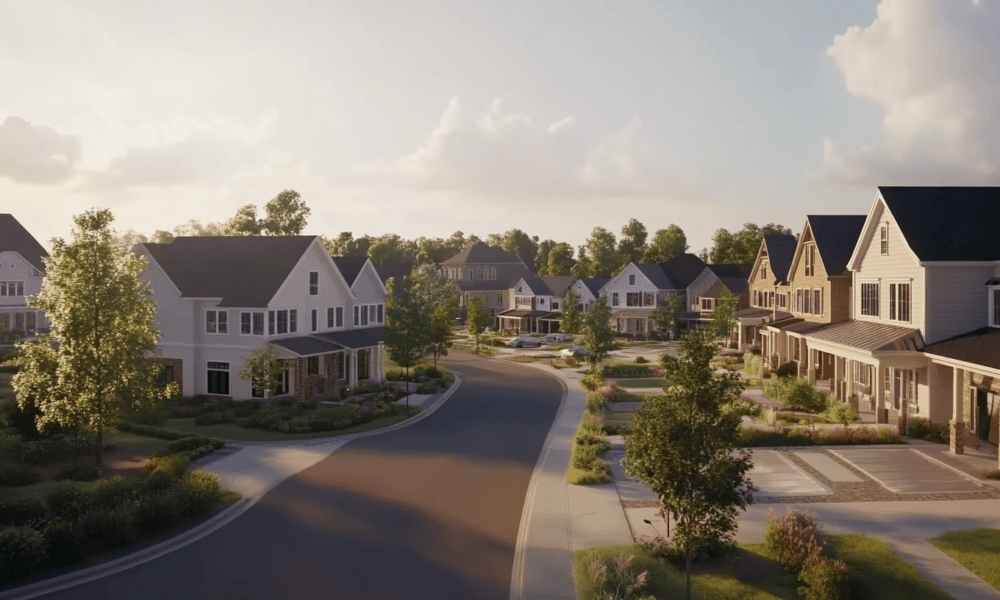The Future of Real Estate
The real estate industry is evolving at a rapid pace, driven by technological advancements, shifting societal needs, and the global push for sustainability. The future of real estate will be shaped by various factors, including affordable housing solutions, sustainable building practices, and the impact of remote work on urban and rural areas. As we move forward, these changes will redefine how people live, work, and invest in real estate. In this comprehensive article, we will explore the key trends that are transforming the real estate landscape and what they mean for developers, investors, and homebuyers.
Key Trends Shaping the Future of Real Estate
1. Affordable Housing Solutions
The lack of affordable housing is a growing concern in many parts of the world. Rising property prices, limited housing supply, and income inequality have made it increasingly difficult for people to afford homes. To address this crisis, new solutions are being developed to make housing more accessible and affordable for all.
1.1 Prefabricated and Modular Homes
Prefabricated and modular homes are gaining popularity as an affordable housing solution. These homes are manufactured off-site and then assembled on the property, reducing construction costs and time. Prefabrication also allows for greater control over building quality and minimizes waste.
- Cost-Effective Construction: The streamlined construction process of modular homes reduces labor costs and material waste, making these homes more affordable for buyers.
- Scalability: Prefabricated homes can be produced at scale, providing a solution for addressing the housing shortage in urban areas.
1.2 Community Land Trusts (CLTs)
Community Land Trusts (CLTs) are nonprofit organizations that acquire land and ensure that it remains affordable for housing. CLTs provide long-term, affordable housing opportunities by separating the ownership of the land from the home itself, which helps keep prices stable for low- and moderate-income families.
- Affordable Homeownership: CLTs allow families to purchase homes at affordable prices while the trust retains ownership of the land.
- Community Empowerment: CLTs are often community-driven, ensuring that local residents have a say in how the land is used and developed.
2. Sustainable Building Practices
Sustainability is becoming a cornerstone of the real estate industry, as developers and investors recognize the need to reduce the environmental impact of buildings. Sustainable building practices are not only good for the planet but also improve the quality of life for residents and can lead to cost savings over time.
2.1 Green Building Certifications
Green building certifications, such as LEED (Leadership in Energy and Environmental Design) and BREEAM (Building Research Establishment Environmental Assessment Method), are becoming increasingly important in the real estate market. These certifications indicate that a building meets specific sustainability standards, making it more attractive to eco-conscious buyers and tenants.
- Energy Efficiency: Green buildings are designed to be energy-efficient, incorporating features such as solar panels, efficient HVAC systems, and smart lighting to reduce energy consumption.
- Health and Well-being: Sustainable buildings prioritize indoor air quality, natural lighting, and non-toxic materials, creating healthier living and working environments.
2.2 Net-Zero and Passive Buildings
Net-zero buildings are designed to produce as much energy as they consume, while passive buildings are constructed to maintain comfortable indoor temperatures with minimal energy use. These building practices are gaining traction as part of the push for carbon neutrality in the real estate sector.
- Renewable Energy Integration: Net-zero buildings often incorporate renewable energy sources such as solar or wind to meet their energy needs.
- Reduced Carbon Footprint: Passive buildings use high-quality insulation, airtight construction, and energy-efficient windows to minimize heating and cooling requirements.
3. Impact of Remote Work on Urban and Rural Areas
The COVID-19 pandemic accelerated the adoption of remote work, fundamentally changing how and where people live and work. Remote work has had a significant impact on real estate trends, with urban areas facing new challenges and rural areas experiencing increased demand.
3.1 Urban Exodus and Changing Cityscapes
The shift to remote work has led to an urban exodus, with many people leaving densely populated cities in search of more affordable housing and a higher quality of life in suburban or rural areas. This trend has led to changes in demand for urban real estate, with cities needing to adapt to new realities.
- Flexible Office Spaces: As more companies adopt hybrid work models, the demand for traditional office space is decreasing. This has led to the rise of flexible office spaces and coworking environments that cater to remote and hybrid workers.
- Urban Revitalization: Cities are reimagining urban spaces to attract residents back, focusing on creating green spaces, pedestrian-friendly areas, and mixed-use developments that combine residential, retail, and recreational spaces.
3.2 Rural and Suburban Growth
Remote work has also led to increased interest in rural and suburban areas, where people can find larger homes, outdoor spaces, and a quieter lifestyle. This shift is changing the dynamics of the real estate market in these areas, creating both opportunities and challenges.
- Increased Property Demand: Rural and suburban areas have seen a surge in property demand, leading to rising home prices and increased development in previously underdeveloped regions.
- Infrastructure Needs: The growth in rural areas has highlighted the need for improved infrastructure, including high-speed internet, transportation, and healthcare services, to support the influx of new residents.
The Role of Technology in the Future of Real Estate
Technology is playing a pivotal role in transforming the real estate industry, from how properties are bought and sold to how they are managed and maintained. Here are some of the key technological advancements shaping the future of real estate.
1. PropTech and Digital Platforms
PropTech (property technology) is revolutionizing the real estate industry by introducing digital solutions that streamline processes and enhance the customer experience. Online platforms are making it easier for buyers, sellers, and investors to access information and complete transactions.
- Virtual Tours: Virtual reality (VR) and augmented reality (AR) are being used to offer virtual property tours, allowing potential buyers to explore homes without having to visit in person.
- Smart Contracts: Blockchain technology is enabling the use of smart contracts, which can automate real estate transactions, reduce paperwork, and increase transparency.
2. Smart Homes and IoT Integration
Smart home technology is becoming a standard feature in modern real estate, offering convenience, energy efficiency, and improved security. Internet of Things (IoT) devices are being integrated into homes to create connected environments that enhance the quality of life for residents.
- Smart Thermostats and Lighting: Devices like Nest and Philips Hue allow homeowners to control temperature and lighting remotely, optimizing energy use and reducing utility bills.
- Home Security: Smart security systems, including cameras, door locks, and motion sensors, provide enhanced security and peace of mind for homeowners.
Conclusion
The future of real estate is being shaped by a combination of economic, environmental, and technological factors. Affordable housing solutions, sustainable building practices, and the impact of remote work are all driving changes in how we live and work. The industry is evolving to meet the needs of a changing society, with a focus on sustainability, adaptability, and technology-driven innovation. As these trends continue to develop, they will have a profound impact on the real estate market, offering new opportunities for developers, investors, and homebuyers alike.




No Comment! Be the first one.